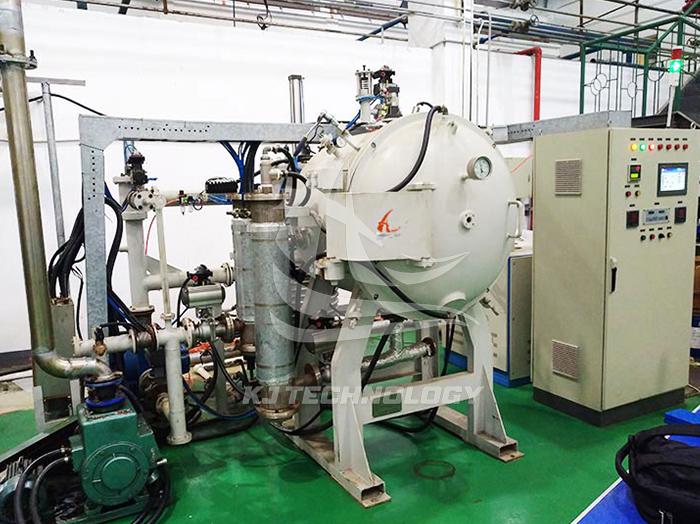Working principle of vacuum brazing furnace
 03-26-2025 Author: KJ technology
03-26-2025 Author: KJ technology
Vacuum brazing furnace is a professional equipment for brazing in a vacuum environment, and its working principle involves multiple physical and chemical processes. The following is a detailed explanation:
1. Creating a vacuum environment
Vacuum system: The vacuum brazing furnace is equipped with a vacuum system, including vacuum pumps, vacuum valves, and vacuum gauges. Before brazing, the vacuum pump is started to extract air from the furnace chamber, creating a vacuum environment. The vacuum degree can usually reach 10−3Pa or even lower to ensure no oxidation or contamination during the brazing process.
Vacuum control: The control of vacuum is crucial for the quality of brazing. Excessive vacuum may cause metal evaporation, while insufficient vacuum may introduce oxygen and water vapor, affecting the brazing effect.
2. Heating process
Heating element: The vacuum brazing furnace adopts electric heating method, and the heating element is usually a resistance wire or an induction coil. Resistance wire heating is suitable for low-temperature brazing, while induction heating is suitable for high-temperature brazing, with faster heating speed and higher efficiency.
Temperature control: The temperature inside the furnace is monitored in real time through temperature sensors such as thermocouples and compared with the set temperature. The temperature control system automatically adjusts the heating power according to the deviation, ensuring that the temperature inside the furnace is precisely controlled within the range required for brazing.
3. Brazing process
Solder selection: The choice of solder depends on the type of material being welded and the brazing temperature. The melting point of the brazing material should be lower than that of the welded material to ensure that the brazing material can melt and fill the joint gap during the brazing process.
Brazing operation: In a vacuum environment, place the workpiece to be welded and the brazing material into the furnace, and heat them according to the set temperature curve. As the temperature increases, the brazing material begins to melt and fill the joint gap, forming a firm brazed joint.
4. Cooling process
Cooling method: After brazing is completed, the temperature inside the furnace begins to decrease. The cooling method can be natural cooling or forced cooling, depending on the brazing material and process requirements.
Cooling rate: Cooling rate also has an impact on the quality of brazed joints. Too fast a cooling rate may cause cracks or deformation in the joint, while too slow a cooling rate may reduce production efficiency.
5. Advantages of vacuum brazing
Non oxidation: Brazing in a vacuum environment can prevent metal from reacting with oxygen, water vapor, etc., thus preventing oxidation and corrosion.
High quality joints: Vacuum brazing can obtain high-quality brazed joints with high strength, high sealing, and good corrosion resistance.
Wide applicability: Vacuum brazing is suitable for brazing various materials, including metals, ceramics, composite materials, etc.








